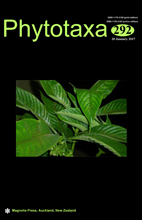Abstract
The fern flora of the Seychelles archipelago remains relatively poorly known. Recent projects involving the development of the Seychelles National Herbarium and study of key biodiversity areas have resulted in extensive explorations of the ferns on the granitic islands. Historical literature, newly collected specimens and older collections have been revised for the fern family Hymenophyllaceae as a prelude for a fern checklist, resulting in several discoveries. In Didymoglossum, specimens were found with a very unusual character: exsert sori. Revision of the specimens, including phylogenetic analyses, revealed that these belong to two distinct species: Didymoglossum beccarianum comb. nov. (until now only known from Southeast Asia) and a new species endemic to Seychelles, which is described as D. beaverianum below. The exact identity of the Southeast Asian species required to review a complex of species previously considered synonymous to D. motleyi. As a result, we propose a taxonomic hypothesis where Didymoglossum motleyi is in fact known from the type only (from Borneo); D. beccarianum includes the synonyms Trichomanes cognatum, T. sayeri and T. minutissimum and is widely distributed from Seychelles to the western Pacific Ocean and finally Didymoglossum (Trichomanes) cultratum comb. nov., which is maintained as a separate species (endemic to Fiji and known from the type only). We conclude by emphasizing the main diagnostic characters in this complex of species, including characters that have been neglected in the past.

